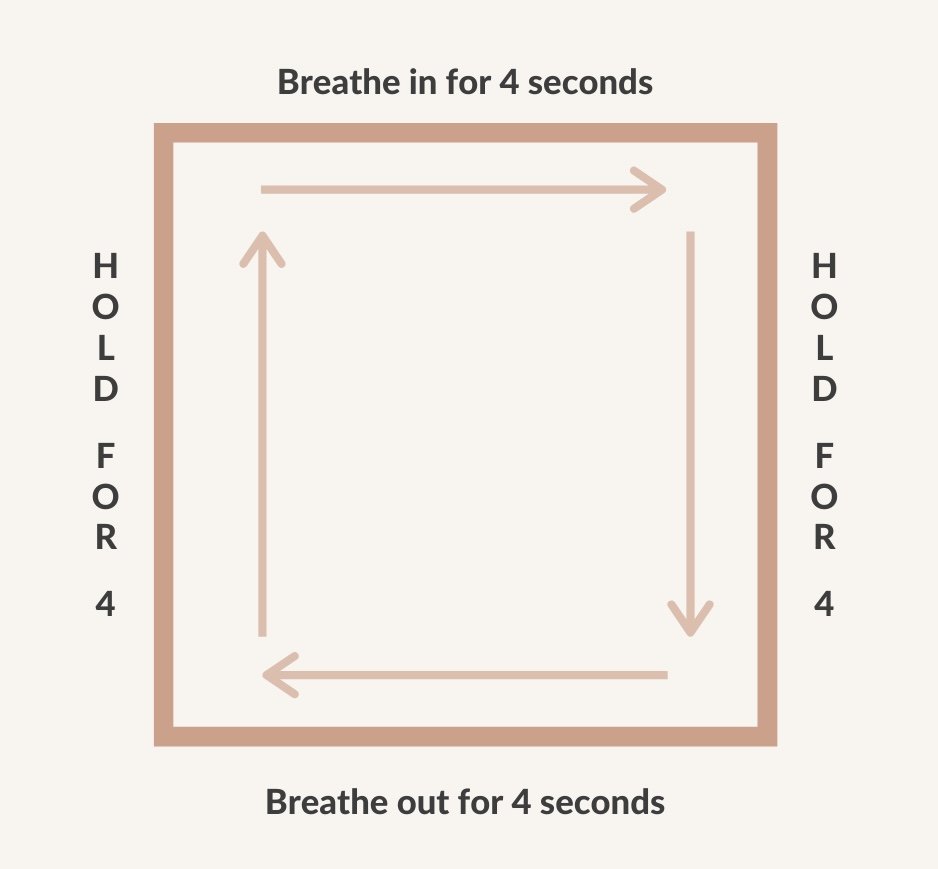How To Stop Panic Like A Navy SEAL
Imagine this:
You are going about your day when suddenly, you feel a pain in your chest. You think “it’s probably just heart burn, nothing to worry about.” But then, your chest gets tight & realize that breathing takes effort. Your breaths become shorter, & more rapid. Your mind starts racing trying to figure out what’s going on. It starts with natural thoughts such as
“I just need to sit down and relax” but quickly jumps to “am I dying?!”
Your mind starts to spiral, jumping quickly from thought to thought with increasing worry. Your body feels tense & you realize all your muscles are tightening. You begin to feel indecisive & can’t make decisions. You realize you might be having a panic attack. But after thinking that, you start to panic more because you’re worried about having a panic attack. Suddenly you can’t stop it, you being to hyperventilate. You are in full blown panic mode.
For many across the globe they don’t have to imagine, this is their reality. Although everyone’s panic attacks present differently, they all share similar aspects. Tightness in the chest, racing thoughts, difficulty breathing and making decisions, catastrophizing, the list goes on.
Panic attacks are short lived periods of excessive worry & intense fear that can result in both physical and cognitive symptoms. The event that triggers these can be anything from a slow build up of stress throughout the day, to a small event, or even worry about having a panic attack can cause a panic attack. While it may feel like these last forever, peak intensity occurs within minutes. Therefore, most panic attacks only last between 5-20 minutes.
It can be terrifying, embarrassing, frustrating, & a whole host of other feelings. If you have ever had a panic attack, you know that you would do anything to try & feel better in that moment. Below are some ways to get though these hard moments and shorten or even avoid a panic attack altogether.
Combat Tactical Breathing
If anyone has ever told you to ‘calm down’ while you’re upset, you know that it doesn’t work & in fact often makes the situation worse. So why do we think that will help us if we say it to ourselves? Instead focus on calming yourself by focusing on your breath. Slowing your breathing is the fastest & easiest way to do this & is a technique SEALs & first responders have been using for years in acute stressful situations.
When you are stressed, your breathing shifts from your belly (where relaxed breathing originates) to your upper chest, resulting in shallow breathes that keeps us on edge & our stress levels high. Relaxation techniques such as mindful breathing helps slow this down. Which means the deeper you breathe, the more relaxed you feel.
Tactical Breathing has been used by warriors from every culture all throughout history to maintain focus & calm the mind in times of great stress. This focuses on slowing the breathing rate by breathing through the nostrils, and counting to four on each inhale & exhale.
Simply focus on the way your breath feels going in and out. Try to extend both the in and out breaths by 1 second each time you breathe. Do this until you get to 4 seconds in through your nose, 4 seconds hold, 4 seconds out through your mouth, and hold for 4 seconds.
Be aware of how extending your breathing & taking deep belly breathes makes you feel different than when you were taking faster more shallow breathes from your upper chest area. Take comfort in how much better that feeling is.
If you want to try a more advanced practice, you can take your hand & close off your right nostril so that you are only inhaling through the left nostril. Then switch, so that the left nostril is closed off & you are exhaling through your right nostril. Do this all while trying to take deeper & slower breaths with each inhale/exhale.
Tactical breathing literally rewires your nervous system & neural pathways. So the more you practice, the more often you will unconsciously default to slower diaphragmatic breathing throughout your normal day.
Ground Yourself
Another way to get through this is to ground yourself in the moment. It’s easy to feel separate from your body when you are in the midst of a panic attack. Using grounding techniques to distract yourself & help you feel more in tune with your body will help get you out of your own head. A popular ground method is the 5 senses technique.
In the area around you, find
5 things you can see,
4 things you can hear,
3 things you can feel,
2 things you can smell,
1 thing you can taste.
Once you go through this process you should feel better, & if not, go through the process again & try to find different senses this time.
Practice, Practice Practice
It’s important that when trying these techniques, that you don’t attempt them for the first time when you are in the middle of a panic attack. If you were just starting to learn how to play football, you wouldn’t attempt to execute a play during a game without at least running though it a few times during practice first, right? Make sure to practice these skills when you are calm, so that when you are panicked you don’t overwhelm yourself more trying to remember what to do.
Anxiety can be overwhelming, but with the support of a professional that can teach you some solid coping techniques, you can live your best life & face panic like a SEAL.
If you want to learn more techniques, follow our Facebook & Instagram for more tips like this. You can also give us a call and make an appointment with one of our trained staff who can help adjust techniques such as these to your specific needs.
